The perilous adventures of England’s greatest detective, Sherlock Holmes—unraveling the insidious Red-headed League, falling prey to Irene Adler’s virtuoso scheme, deducing Grimesby Roylott’s serpentine treachery, dueling with Moriarty’s villainous intellect through Victorian London’s labyrinthine alleys—were born in the East. Dr. Watson’s renowned narrative of Western crime fiction’s penultimate sleuth, in text abounding with quintessentially British mannerisms and linguistic conventions, began in 1887 with the first Sherlock Holmes tale, A Study in Scarlet, recounting Watson’s calamitous military service in Afghanistan, as Assistant Surgeon attached to the Fifth Northumberland Fusiliers. Upon reaching Candahar, Watson assumed his new duties and experienced “nothing but misfortune and disaster” at the “fatal battle of Maiwand” where he was “struck on the shoulder by a Jezail bullet, which shattered the bone and grazed the subclavian artery.” [1] Recuperating at a base hospital in Peshawar, a city in northern Pakistan near the Khyber Pass, one of Western literature’s most famous sidekicks—whose ineradicably precarious health was continually broached by Conan Doyle throughout the series—began to improve, only to be “struck down by enteric fever, that curse of our Indian possessions.” [2]
Danger, romance, violence, eroticism, mystery, nobility, languor, and exoticism delineated the Eastern silhouette in 19th century Western eyes, launching an abiding fascination with the Orient that infused staid European air with sandalwood, frankincense, and myrrh (fig. F). This was not the familiar Orient of China, Japan, or India, but rather Napoleon’s Orient of 1798-1801, when his failed military campaign in Egypt succeeded not in martial domination but instead through scholarship, sparking an enduring frenzy of artistic, ethnographic, botanical, scientific, linguistic, and literary interest in the exotic East, manifest by the Institute of Egypt, Napoleon’s Orientalist mirror of its academic Parisian sister. Arab lands, with their inscrutable customs and alien inhabitants, were blatantly “other”, far removed from the self-perceived refinement, delicacy and sophistication of civilized Western culture, which held the Orient in its hand as both barometer and shadowbox—at once sitting in judgment on “backward” mores and crude brutality while swimming in the heady romance of harems, snake charmers, slave markets, and Bedouin caravans (fig. I).
Adopted from the Latin word for East, the Orient “has long been the name Western Europe (the Occident) used for the lands of the Ottoman Empire, which at its peak included Turkey, North Africa, Egypt, Syria, Greece, parts of Eastern Europe and the regions known as The Holy Land.” [3]
Baked in that otherworldly, blanching light peculiar to the Middle East, these lands became vital destinations for artistic pilgrimages by Western European painters and sculptors, particularly the French—painters such as Eugène Delacroix (who journeyed to Morocco in 1832), Jean Jules Lecomte du Nouÿ, Jean-Léon Gérôme, and François-Léon Benouville—whose intellectual interest was critically fueled by Napoléon’s expedition. Visual addiction to the novelty of deserts, harems, mosques, and markets seduced artists throughout Europe, with Germans, Italians, British, Spanish, and even the occasional American journeying to the Orient to saturate canvases with hues of extraordinary convolution.



Figures: A | B | C |
In Orientalist art, subjugated passions, trepidations, and confirmed prejudices, themes aptly comparable in crime literature to “rounding up the usual suspects”, arose with the regularity of lunar cycles: sensually rendered women with beckoning gazes in exotic costumes stratified with bejeweled collars and headdresses dripping coins (fig. K), or languishing on embroidered sofas under exquisitely draped furs and silks (fig. A) ; grand architectural sites and rustic archaeological elements seductively lit; achingly picturesque landscapes of the Nile at sunset punctuated by looming pyramids, ibis, palms, and hulking musk oxen; caravans snaking through moonlit desert past spectral palms, the shadows of camels and turbaned riders casting mysterious specters across the sand; indolent Arab men encamped in coffee houses—smoking, playing board games, or simply passing time; naked alabaster-skinned harem women, guarded by eunuchs, bathing in lavish settings under the watchful eyes of dark-skinned attendants.
Despite Arabian Nights romanticism and the perfume of Ottoman Empire legend, works produced by those under the spell of the East can best be characterized as academic art—scrupulous in historical and pragmatic detail (fig. H, below) , and strongly narrative—resonant with photographic immediacy. The paintings are notable for painstakingly accurate realism of character and setting, particularly architectural elements and materials in service of mood (fig. E), and figural representation of anatomical excellence and emotional poignancy.
With the hypnotic lure of a snake charmer’s song, this 19th century European phenomenon gathered strength and numbers, curiosity and exploration blossoming into a major cultural movement endowed with a fitting moniker; “the vast body of art and scholarship resulting from the Western drive to examine cultures and lands quite different from their own is known as Orientalism. The words and images that comprise this phenomenon are often, but not exclusively, proprietary and demeaning in nature, yet they remain among the most compelling creations in Western cultural history”. [4]
Academic art’s only permanent home in the United States is the peerless Dahesh Museum of Art in New York City, an elegant series of intimate, interconnected galleries wholly dedicated to European academic art of the 19th and early 20th centuries. These handsome chambers of Salon atmosphere and curatorial exhilaration have been host to three Orientalist exhibitions—most recently A Distant Muse—since the museum’s founding in 1995.


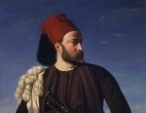
Figures: D | E | F |
Key masterworks from the Dahesh Museum of Art’s vast collection of Orientalist art were on view in its wonderfully eclectic anniversary exhibition, The Dahesh Collection: Celebrating a Decade of Discovery, (May 24-September 22, 2005). A bold salmagundi of drawings, sculptures, paintings, and literary volumes (fig. D), the exhibition highlights Orientalist works inspired by the Middle East, home of the institution’s founder—the writer, philosopher, connoisseur and fine art collector, Dr. Dahesh (born Salim Moussa Achi, later adopting his nom de plume—translated as “inspiring wonder” in Arabic—at age 21), fulcrum of intellectual life in Beirut, Lebanon for half a century.
Global exploration by intrepid Westerners, profound archaeological discovery, scientific revolution, rampant European colonialism, and robust literary flowering marked the early 1860s-1ate 1880s, coinciding with fine art’s Orientalist explosion. Selecting the wholly significant year 1859, when Darwin’s Origin of Species was first published, one can literally watch the steady march of interdisciplinary achievement over three decades, as furious creative impetus and innovation pushed human culture to new levels: John Speke and James Grant descended the Nile to Gondokoro in 1863, and Livingstone explored the Congo four years later, with exploration of the Sudan and the Sahara by Gustav Nachtigal following in 1869; Only seven years apart, Archaeopteryx was discovered at Solnhofen, Germany (1861) and the skeleton of a Cro-Magnon man from the Upper Paleolithic was unearthed in France by Louis Lartet; One year after the microstructure of steel was discovered by Henry Clifton Sorby, Louis Pasteur invented pasteurization (for wine) in 1864—one year before the founding of MIT, and also the initiation of antiseptic surgery by Joseph Lister; While the Orient Express made its first run from Paris to Istanbul, the French gained control of Tunis (1883), Germans occupied South-West Africa (1884) and soon annexed Tanganyika and Zanzibar (1885).
As the known world expanded and adventurers looked to exotic horizons, a generation of writers turned inward to create some of literature’s most revered and influential classics: Dickens’ Great Expectations (1861), Turgenev’s Fathers and Sons (1862), Carroll’s Alice’s Adventures In Wonderland(1865), Dostoevsky’s Crime and Punishment (1866), Stevenson’s Treasure Island (1882), Haggard’sKing Solomon’s Mines (1885), Burton’s The Arabian Nights (1885), Conan Doyle’s A Study In Scarlet, the first Sherlock Holmes story (1887), Kipling’s Plain Tales From the Hills (1888), Wilde’s The Happy Prince and Other Tales (1888), Twain’s A Connecticut Yankee in King Arthur’s Court (1889).
Many of Western literature’s iconic novels written during this period were profoundly influenced by the East, incorporating structural elements of Orientalism into their fabric on a fundamental—rather than simply ornamental—level. Beyond the epidermal exoticism which so enthralled many visual artists, writers of the day swallowed the Middle East whole, excreting its substance through every pore and orifice, allowing “the other” to fundamentally alter longstanding perceptions of human motivation, character, and emotion.
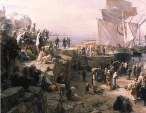


Figures: G | H | I |
In describing the universal emotion of love in his 1888 short story, The Nightingale and the Rose, Wilde chose Eastern—not Western—metaphor, imagery, and language, which transcend superficial exoticism by supplanting the Victorian ideal of pure, chaste devotion with palpable, dangerous ardor: “Flame-coloured are his wings, and coloured like flame is his body. His lips are sweet as honey, and his breath is like frankincense.” [5]
In fact, all of Charles Robinson’s memorable watercolor and pen and ink illustrations for Wilde’s book,The Happy Prince and Other Tales, are decidedly Orientalist and perfectly integrated with the emotional texture of the author’s words, setting these stories of universal human emotions and fundamental narrative themes in whimsical foreign realms which—despite their lush exoticism and sweeping sensuality—always seem to feel like home.
Kipling, on the other hand, saw the West as stifling purgatory and the East as haven and spiritual release. “In his autobiography, Something of Myself, Kipling conceived his early life as a story of exile and return. He represented India as a land of imaginative and emotional stimulus, England as a land of exile where he learnt (through deprivation) the advantages of self-discipline and reserve.” [6]
Contrasting the shimmering clouds of Indian heaven with the banality of British hell, Kipling eloquently delineates the core of his East-West ideologies in the short story, The Bisara of Pooree. His Orient was precisely the kind of mystical sphere that beckoned simultaneously from the Middle East to Europe’s academic artists: “All kinds of magic are out of date and done away with, except in India, where nothing changes in spite of the shiny, top-scum stuff that people call ‘civilization’.” [7] The West was mundane, an arid place of proper behavior and gray wool, which saw the East as decidedly quaint: “In ordinary ears, English ears, the tale was only an interesting bit of folklore.” [8]
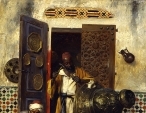


Figures: J | K | L |
As if describing the Dahesh Museum’s painting, The Metal Worker (ca. 1888), by Rudolph Ernst (fig. J)—stunning visual ode to the Orientalist romance with texture and material—Kipling describes an Eastern vessel: “In shape it is a tiny square box of silver, studded outside with eight small balas-rubies. Inside the box, which opens with a spring, is a little eyeless fish, carved from some sort of dark, shiny nut and wrapped in a shred of faded gold cloth.” [9]
Countless parallels between Orientalist academic art and Western literature can be drawn, but perhaps the most cogent union of adopted cultural identities and familiar mores can be found in the fictional Wonderlands created by writers delineating the penultimate “other”; not surprisingly, one of Western literature’s most intricately realized fantastical worlds bears multiple hallmarks of the exotic East. Lewis Carroll created the alternate universe in his Wonderland (fittingly enough, one may be reminded again that Dahesh means “inspiring wonder” in Arabic), in Alice’s Adventures in Wonderland(1865), which indelibly projects its characters and tone through the volume’s original John Tenniel illustrations.
Seated on a behemoth mushroom, the caterpillar draws a pragmatic Alice into one of literature’s most purely existential dialogues; “Who are you?” he asks, again and again, while smoking a pipe—an object which acts as a third character, initiating a conversation few readers could ever forget: “For some minutes it puffed away without speaking; but at last it unfolded its arms, took the hookah out of its mouth again, and said, ‘So you think you’re changed, do you?’”. [10]

Although the Queen’s English has chiseled the caterpillar’s brusque enunciation to a crisp point familiar to Carroll’s readers, nothing else about one of the story’s pivotal characters is comfortably British. The caterpillar’s pipe is not of the wood-paneled gentlemen’s club variety, but an exotic, serpentine hookah—a tobacco pipe of Near Eastern origin with a long, flexible tube by which the smoke is drawn through a jar of water and thus cooled. Tenniel has depicted the insect in profile, its segmented head an unmistakable turban and singular facial features those of an aged Middle Eastern man; a fabric sleeve erupts from the caterpillar’s body in the sinuous folds of a Moroccan robe.
Lewis Carroll’s Orientalist caterpillar belongs to his perversely delirious Wonderland, but in the permanent collection of the Dahesh Museum, seated in the corner of Eugène Alexis Girardet’s evocatively moody 1874 oil painting, Moroccan Coffee House, is the caterpillar’s human doppelganger. (Fig. upper left)




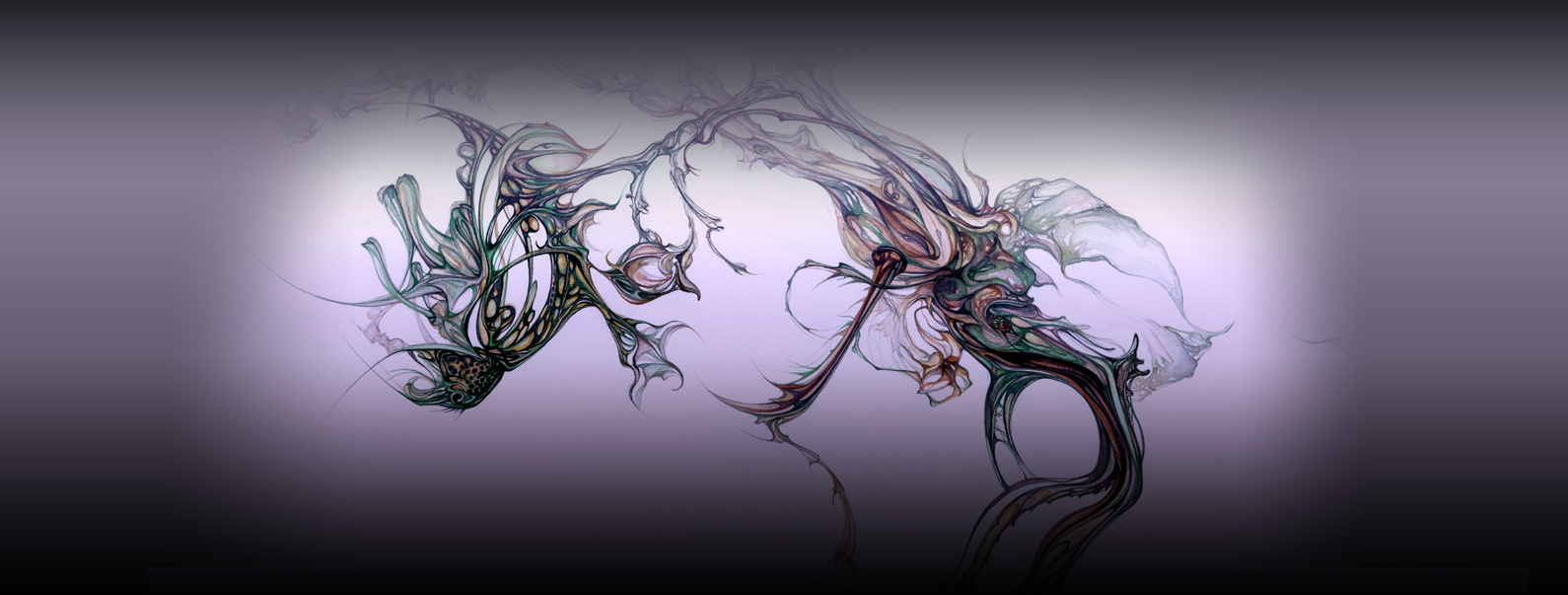

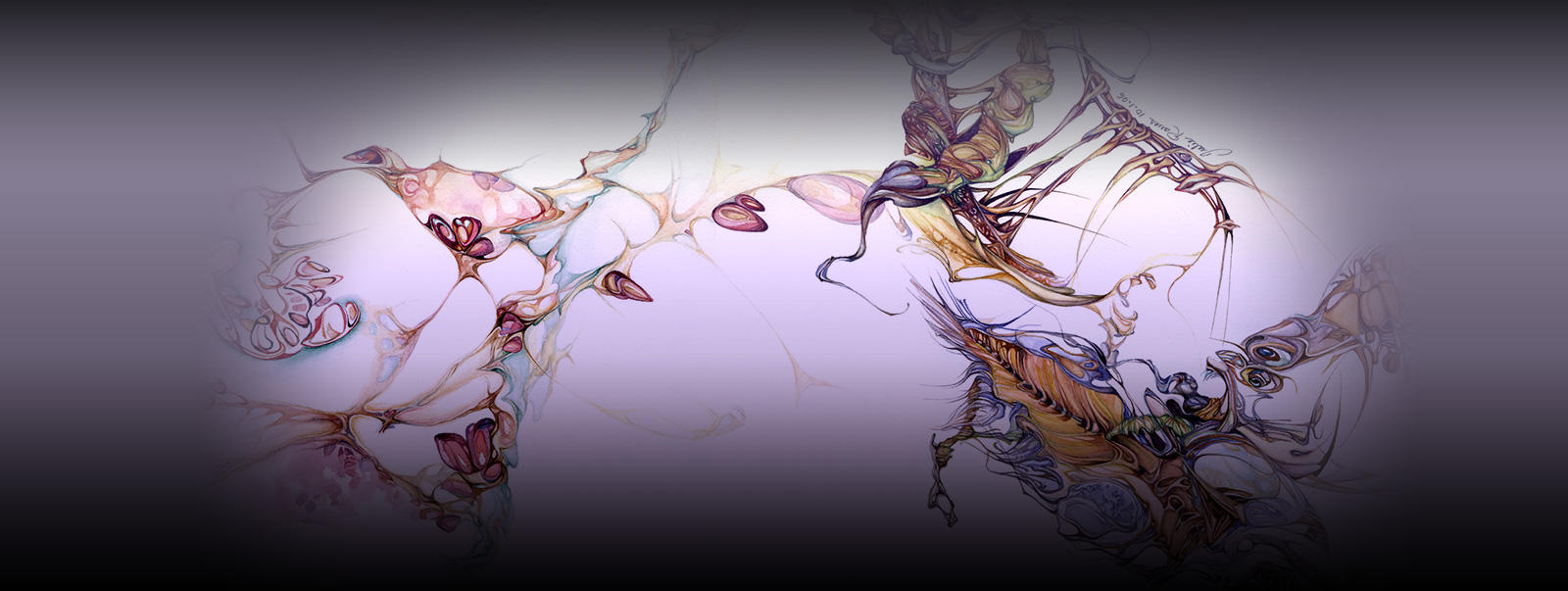
COMMENTS